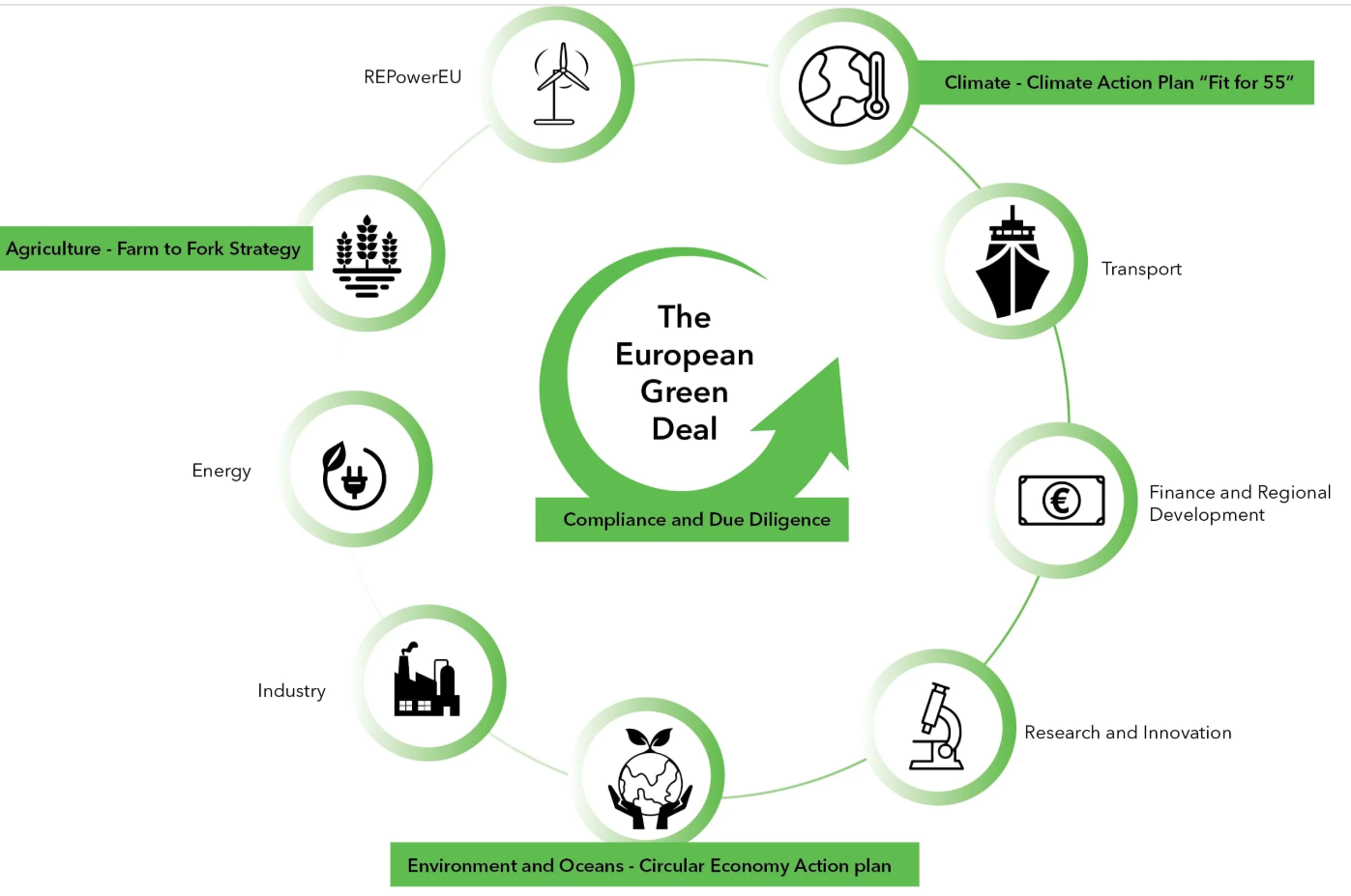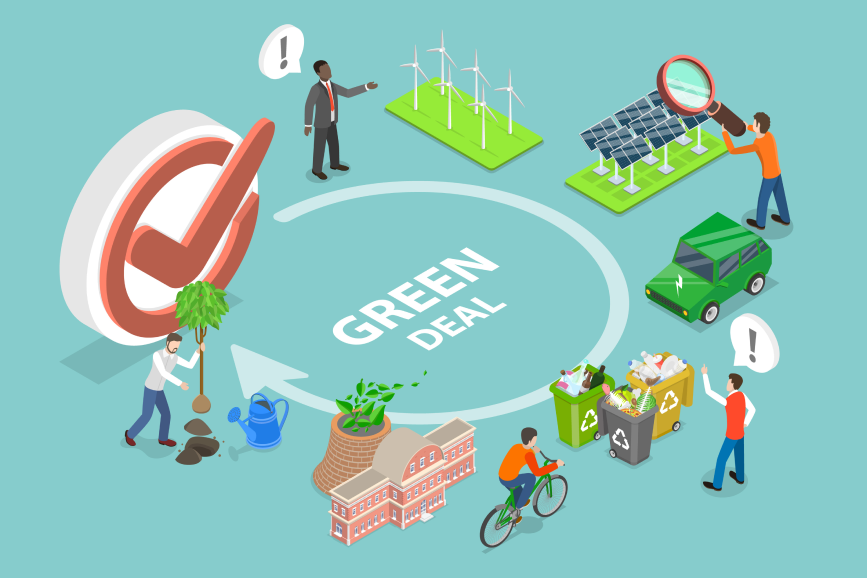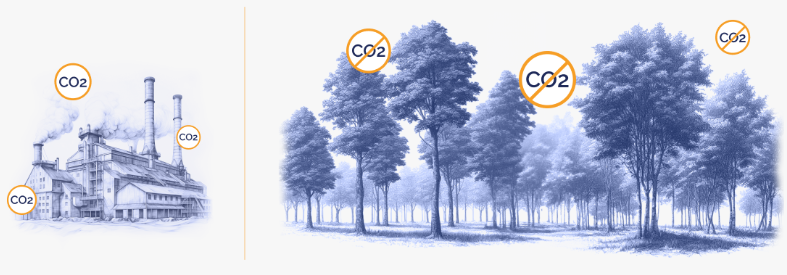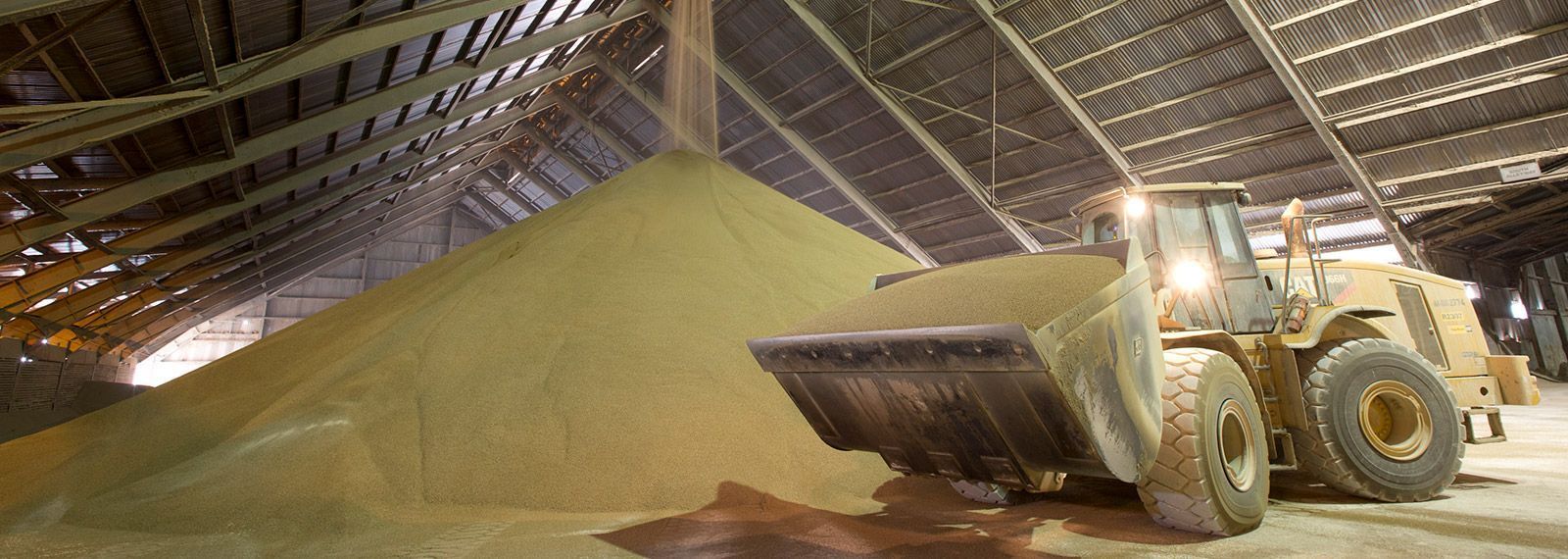How EU Green Deal Policies Impact Industrial Chemical Use
The European Green Deal is the European Union’s ambitious roadmap to make Europe the first climate-neutral continent by 2050. This sweeping set of policy initiatives touches every major sector of the economy, from energy and transport to agriculture and industry, to promote sustainable growth while drastically reducing greenhouse gas emissions. At the heart of this strategy lies a strong emphasis on transforming how chemicals are produced, used and managed.
Industrial chemicals are crucial in manufacturing, agriculture, healthcare and countless other sectors. However, their production and disposal often pose risks to human health and the environment. Recognizing this, the EU Green Deal has placed chemical management high on its agenda. The Chemicals Strategy for Sustainability (CSS), launched as part of the Green Deal, aims to phase out the most harmful substances, encourage innovation in safer alternatives and strengthen regulatory oversight across Europe.
In this blog post, we explore how the EU Green Deal policies are reshaping the landscape for industrial chemical use. We’ll examine key regulatory changes, their impact on businesses, and what companies can do to stay compliant and competitive. Understanding these shifts is essential for industry players navigating a more sustainable, and more demanding chemical future.
What is the European Green Deal?
The European Green Deal, introduced in December 2019, outlines a comprehensive roadmap for making the EU’s economy sustainable by decoupling economic growth from resource use and significantly reducing greenhouse gas emissions. The Green Deal spans multiple sectors, including energy, agriculture, construction and industry. It seeks to promote clean technologies, circular economy practices and biodiversity protection.
At its core, the European Green Deal is about driving systemic change. It sets out clear objectives: achieving net-zero emissions by 2050, reducing emissions by at least 55% by 2030 (compared to 1990 levels), and fostering a just and inclusive transition for all EU member states. Key enforcement milestones include the "Fit for 55" package, introduced in 2021, which outlines specific legislative measures to meet these targets and regular progress reviews aligned with the EU Climate Law.
A central pillar of the Green Deal is the Chemicals Strategy for Sustainability (CSS). Released in 2020, the CSS aims to better protect human health and the environment while driving innovation in safer and more sustainable chemicals. It seeks to phase out the most hazardous substances, improve transparency and harmonize chemical regulations across the EU. The CSS directly impacts industrial chemical use by redefining safety standards, encouraging the substitution of harmful substances and setting the stage for a more circular, environmentally conscious chemical industry.

Key EU Policies Affecting Chemical Use
The European Green Deal has triggered a wave of regulatory reforms aimed at making chemical use across the EU safer and more sustainable. Several key policies are being revised or introduced to align industrial practices with the Green Deal’s climate and environmental goals. Below are three major initiatives currently reshaping the chemical industry.
The REACH Regulation Reforms
The REACH Regulation (Registration, Evaluation, Authorisation and Restriction of Chemicals) is the cornerstone of EU chemical regulation. Under the Green Deal, REACH is undergoing significant updates to strengthen protection for people and the environment. Proposed reforms include simplifying the chemical approval process, introducing stricter data requirements and increasing the speed of regulatory decisions.
A major shift is the expected introduction of group-based assessments, where chemicals with similar structures or hazards are evaluated together. This will make it more difficult for companies to register substances that are marginally different from restricted ones. Additionally, more substances will likely be reclassified as hazardous, increasing the burden of proof for safe use and triggering new restrictions. These changes will require businesses to revisit their portfolios and invest in safer alternatives and data transparency.
Restrictions on Harmful Substances (e.g., PFAS Ban)
The EU is taking a firm stance on per- and polyfluoroalkyl substances (PFAS) and other persistent pollutants. Often dubbed "forever chemicals", PFAS are widely used in industrial processes and consumer goods due to their durability. However, their resistance to degradation and links to health risks have placed them under regulatory scrutiny.
The proposed EU-wide PFAS ban could become one of the broadest chemical restrictions in history, affecting sectors like electronics, textiles, aerospace and food packaging. Companies operating in these areas may need to rapidly adapt, phase out PFAS-containing substances and invest in compliant alternatives.
Zero Pollution Action Plan
The Zero Pollution Action Plan, launched in 2021, complements the Green Deal by targeting cleaner air, water and soil by 2050. Its objectives include reducing pollution from industrial chemicals, improving wastewater management and limiting the environmental release of hazardous substances.
Future policy shifts will likely enforce tighter emission controls, stricter discharge permits, and extended producer responsibility for chemical waste. This will pressure industries to adopt cleaner production methods and integrate circular economy principles more fully into their operations.
Impact on Industrial Sectors
The EU Green Deal and its associated chemical policies are having far-reaching effects across multiple industrial sectors. Stricter regulations, safety standards, and sustainability goals are pushing industries to re-evaluate their materials, processes and long-term strategies. Below is a closer look at how key sectors are being impacted.
Chemical Manufacturing
Chemical manufacturers are at the center of the Green Deal’s transformation. The push toward bio-based and safer chemical alternatives is accelerating, driven by regulatory pressure and consumer demand. Companies are increasingly investing in green chemistry, developing products with reduced toxicity and lower environmental impact.
Innovation is not only encouraged but essential. EU funding programs such as Horizon Europe support R&D in safer chemical production, recycling technologies and digital product passports. Additionally, the move toward group restrictions under REACH and the Chemicals Strategy for Sustainability (CSS) is forcing manufacturers to phase out entire classes of hazardous substances, rather than evaluating them individually. This shift requires agile product reformulation and deeper collaboration across the supply chain.
Automotive & Electronics
The automotive and electronics sectors are particularly affected by new material restrictions under the Green Deal. Regulations like the planned PFAS ban and stricter REACH controls are driving material substitution mandates, requiring manufacturers to replace long-used substances with safer alternatives.
These changes impact everything from wiring insulation and thermal management systems to circuit boards and coatings. As a result, companies are facing higher R&D costs, potential supply chain disruptions and the need to certify new materials under strict environmental and safety guidelines. Smaller suppliers may struggle to keep pace, leading to restructuring and a search for more sustainable sourcing options.
Agriculture & Food Processing
In agriculture and food processing, chemical regulations are directly influencing the use of fertilizers, pesticides and food-grade additives. Under the Green Deal’s Farm to Fork strategy and the Zero Pollution Action Plan, the EU aims to reduce chemical pesticide use by 50% and nutrient losses by 50% by 2030.
This shift is driving demand for precision agriculture, organic farming inputs and alternative crop protection methods. However, adapting to these new standards comes with compliance costs, including product reformulation, certification and potential yield impacts. Food processors must also ensure that additives and processing aids meet stricter purity and safety criteria, further increasing regulatory complexity.
Overall, these changes are reshaping how industrial sectors approach sustainability, risk management and innovation in the chemical value chain.
Challenges for Industrial Stakeholders
While the EU Green Deal presents a long-term vision for sustainability, it also introduces significant short- and medium-term challenges for industrial stakeholders. The shift toward safer chemical use and stricter environmental controls brings new regulatory, logistical and financial burdens that companies must navigate carefully.
Regulatory Compliance & Complexity
The expanding scope of chemical regulations, particularly under REACH reforms and the Chemicals Strategy for Sustainability, demands greater investments in audits, safety testing, and compliance documentation. For many businesses, especially those operating across multiple EU markets, the complexity of tracking regulatory updates and adapting product portfolios can be overwhelming.
Small and medium-sized enterprises (SMEs) face the greatest strain. Unlike large corporations with dedicated compliance teams, SMEs often lack the resources to manage new requirements efficiently. This disparity could lead to a widening competitiveness gap, where smaller players struggle to maintain market access or keep up with evolving safety standards.
Supply Chain Disruptions
As harmful substances are phased out or banned, such as the potential EU-wide PFAS restriction, supply chains are being forced to adapt rapidly. Companies may need to stop sourcing certain raw materials from non-compliant suppliers, find new local production options, or face delays as substitutes are qualified and approved.
This dynamic increases operational uncertainty, particularly for industries reliant on imported chemicals or specialized compounds that may no longer be available in the EU market. The pressure to localize production or source more sustainable inputs adds to the logistical burden.
Technology & R&D Investment Needs
To stay competitive, companies must accelerate investment in green chemistry, cleaner technologies, and product reformulation. Innovation is essential to comply with emerging regulations while meeting performance and safety standards.
While the EU offers support through funding programs and subsidies, the up-front costs of research, testing and process redesign can be prohibitive, especially for resource-constrained firms. Public-private partnerships, collaboration with research institutions and increased access to EU innovation grants will be critical in helping industries bridge this gap and turn regulatory challenges into growth opportunities.
Opportunities for Sustainable Innovation
While the EU Green Deal introduces significant regulatory challenges, it also creates powerful incentives and opportunities for sustainable innovation. Companies that embrace change early and invest in greener practices can position themselves as industry leaders, tapping into new markets and building long-term resilience.
Green Substitutes and Circular Economy
One of the most promising areas of innovation lies in the development of green chemical substitutes - biodegradable, non-toxic and low-impact alternatives to conventional industrial chemicals. From plant-based solvents to bio-derived plasticizers and surfactants, demand is growing rapidly for materials that offer equivalent performance with reduced environmental harm.
In parallel, the shift toward a circular economy is encouraging companies to rethink waste as a resource. Chemical recovery technologies, such as solvent recycling, closed-loop processing and material extraction from industrial by-products are becoming more viable and cost-effective. These approaches reduce dependence on virgin raw materials, lower environmental footprints, and support compliance with EU resource-efficiency targets.
Competitive Advantages for Early Adopters
Companies that move quickly to align with Green Deal principles stand to gain significant competitive advantages. Investors are increasingly prioritizing environmental, social and governance (ESG) criteria, directing capital toward businesses with clear sustainability strategies. Chemical producers and users that demonstrate regulatory compliance, innovation and transparency can attract more funding and partnership opportunities.
On the consumer side, brand loyalty is shifting toward companies with strong environmental credentials. Whether in food, cosmetics, cleaning products, or industrial goods, sustainability is now a key driver of customer trust and preference. Businesses that adopt green chemicals, minimize waste and communicate their efforts effectively are likely to enjoy stronger market positioning and long-term profitability.
Ultimately, the Green Deal offers not just a compliance challenge, but a chance to lead in the next generation of sustainable industrial growth.
Future Outlook: What’s Next in Policy Evolution?
The EU's commitment to sustainability will continue to shape industrial policy in the years to come. Upcoming EU directives are expected to further tighten regulations around chemical use, particularly in areas like hazardous substance reduction, waste management and circular economy practices. The European Chemicals Agency (ECHA) is anticipated to release additional updates to REACH and expand the scope of the Green Deal’s Chemicals Strategy for Sustainability, focusing on more stringent controls for high-risk chemicals and the introduction of new testing protocols.
Looking further ahead, the EU’s long-term vision for industrial sustainability will prioritize decarbonization, resource efficiency and innovation in green chemistry. The development of digital tools for tracking and managing chemicals, such as digital product passports, will likely become a cornerstone of compliance. As the EU works toward its 2050 climate-neutral goal, industrial sectors will need to continue adapting to new policies, leveraging innovation to meet sustainability targets and remain competitive in the evolving market landscape.

FAQs
1) What chemicals are banned under the Green Deal?
The EU Green Deal does not ban chemicals directly, but it strengthens the framework through which harmful substances are restricted or phased out. Under the
Chemicals Strategy for Sustainability (CSS) and ongoing
REACH updates, substances like
PFAS (per- and polyfluoroalkyl substances), endocrine disruptors and persistent, bioaccumulative and toxic (PBT) chemicals are under intense scrutiny. More group-based bans are expected, meaning entire families of similar chemicals could be restricted rather than individual compounds.
2) How does REACH reform affect small manufacturers?
REACH reforms bring stricter data requirements, faster regulatory decisions and increased pressure to prove chemical safety. While these changes enhance consumer and environmental protection, they can be
resource-intensive for small manufacturers, who may lack dedicated compliance teams. This can create financial strain and may require SMEs to seek partnerships or external expertise to navigate the regulatory landscape.
3) Are there funding options for chemical R&D in the EU?
Yes. The EU supports sustainable innovation through several funding programs, such as
Horizon Europe,
LIFE and
Innovation Fund. These initiatives provide grants for projects focused on
green chemistry, waste reduction, bio-based materials and cleaner production technologies. Companies can also access subsidies for pilot projects, technology demonstrations and partnerships with research institutions.
Conclusion
The EU Green Deal is reshaping industrial chemical use through stricter regulations, sustainability goals and innovation incentives. While businesses face challenges like compliance complexity, supply chain shifts and increased R&D demands, they also have opportunities to lead in green innovation and gain competitive advantages. Staying informed and proactive is essential for long-term success in this evolving regulatory landscape.
DECACHEM is committed to aligning with EU sustainability policies by offering high-purity, regulation-compliant chemicals for industrial, food and feed applications, supporting clients in navigating change with safety, quality and environmental responsibility at the forefront.
















